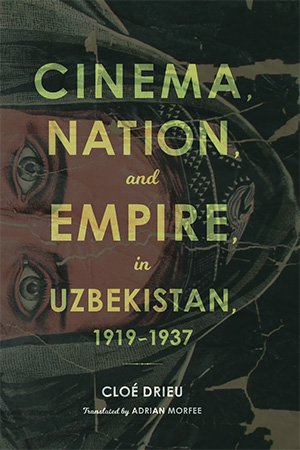
在1924年苏联乌兹别克斯坦成立和20世纪30年代后期斯大林主义恐怖袭击之间,乌兹别克斯坦出现了民族主义电影,催生了第一波国家电影制作和乌兹别克电影精英。在《乌兹别克斯坦的电影、国家和帝国》中,克洛德里欧以乌兹别克电影为镜头,探索中亚苏维埃国家的建立,从俄罗斯帝国崩溃到二战前夕。德里欧认为,电影为观察苏联统治、民族主义和帝国(这里用来表示权力集中)的复杂历史提供了一个完美的角度。通过探索电影作为一种社会政治现象的所有维度——包括电影制作、电影接受和电影话语——德里欧揭示了国家和帝国是如何作为制度现实和想象建构而建立起来的。
根据乌兹别克和俄罗斯国家档案馆的档案研究,以及对14部长篇电影的深入分析,德里欧的作品探讨了极权主义和所谓修正主义学派内部的激烈辩论,这些学派为苏联史学注入了活力,将自己定位于关于国家和国家建设过程的当代讨论中,以及更普遍的民族主义的出现。乌兹别克斯坦最初的法国、电影、国家和帝国的修订和扩展,有助于我们理解中亚是如何被非殖民化的,以前是俄罗斯帝国的一部分,但后来,在斯大林主义时期和20世纪30年代末的镇压之前,遭受了一种新的统治方式。
Cinema, Nation, and Empire in Uzbekistan, 1919-1937
Between the founding of Soviet Uzbekistan in 1924 and the Stalinist Terror of the late 1930s, a nationalist cinema emerged in Uzbekistan giving rise to the first wave of national film production and an Uzbek cinematographic elite. In Cinema, Nation, and Empire in Uzbekistan Cloé Drieu uses Uzbek films as a lens to explore the creation of the Soviet State in Central Asia, starting from the collapse of the Russian Empire up through the eve of WWII. Drieu argues that cinema provides a perfect angle for viewing the complex history of domination, nationalism, and empire (here used to denote the centralization of power) within the Soviet sphere. By exploring all of film’s dimensions as a socio-political phenomenon―including film production, film reception, and filmic discourse―Drieu reveals how nation and empire were built up as institutional realities and as imaginary constructs.
Based on archival research in the Uzbek and Russian State Archives and on in-depth analyses of 14 feature-length films, Drieu’s work examines the lively debates within the totalitarian and so-called revisionist schools that invigorated Soviet historiography, positioning itself within contemporary discussions about the processes of state- and nation-building, and the emergence of nationalism more generally. Revised and expanded from the original French, Cinema, Nation, and Empire in Uzbekistan helps us to understand how Central Asia, formerly part of the Russian Empire, was decolonized, but later, in the run-up to the Stalinist period and repression of the late 1930s, suffered a new style of domination.
OR




